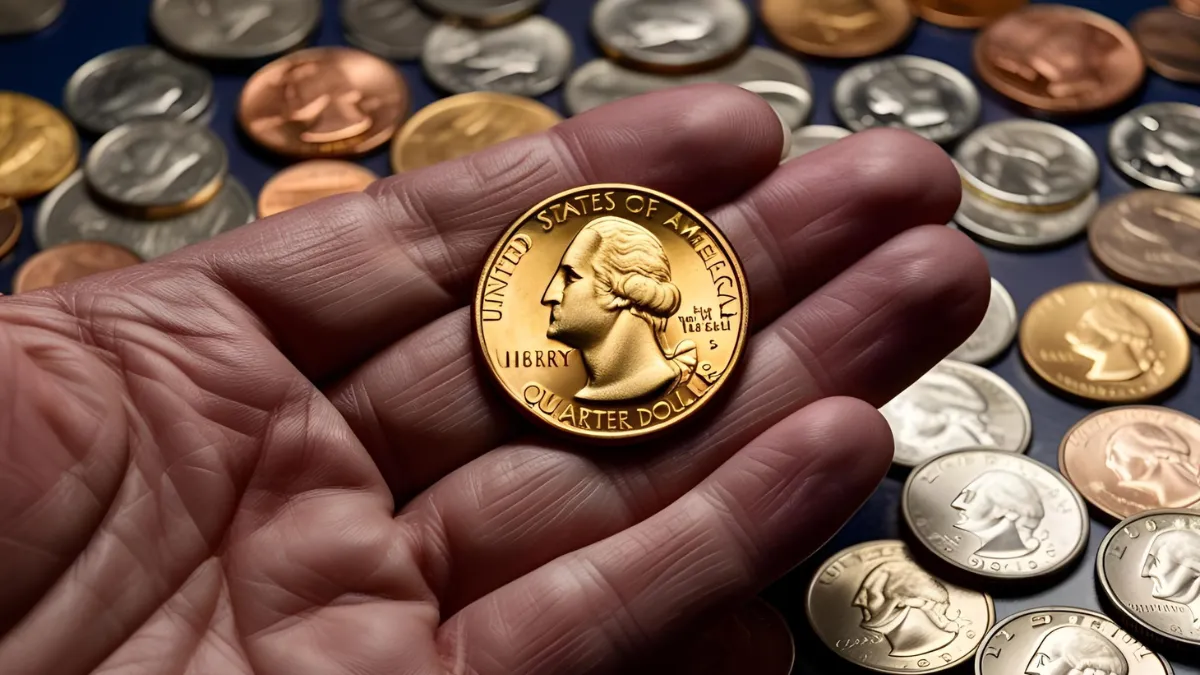These continue even if some of the most rare and important revelations were either never discovered initially or are no longer in use.
There are several reasons why coins could be quite valuable.
Usually it comes from a mix of a restricted quantity created, minting flaws, and a unique history.
From different minting years, pennies, dimes, nickels, and quarters feature these features; the elder the currency, the more precious it is.
The three most noteworthy coins, worth more than $90,000 apiece, are quarter and two coins.
1970 QUARTER
First item is the 1970 S Quarter; Heritage Auctions claims that a particular edition sold for $93,000 at auction in 2023.
But to get that kind of money, a particular and distinctive minting mistake was required.
Rather of being struck on the 1970 S Quarter planchet, the coin was overstruck on top of the planchet for the five dollar coin issued at the San Francisco Mint that year.
Experts looking examined the currency found “parts of the 1898 half eagle”. Benevolently apparent beneath the decoration on the reverse, or tails, side was the date.
Furthermore contributing to its value is the quarter’s high PR66 score.
Usually grading coins on a range of one to 70, the Professional Coin Grading Service (PCGS) assigns one to very poor condition and 70 to perfect condition.
The ideal 66 grading on the coin revealed that it was in extraordinary condition.
2001, D. Lincoln Penny
One further rare coin that can be more valuable and easier to find is the 2001 D Lincoln Penny.
Heritage Auctions sold a version on the dime for $96,000 in August of last year.
What set it apart was a very rare minting mistake sometimes referred to as a “mule.”
Mule coins are made from totally dissonant dies.
For example, this penny has the reverse side of the Roosevelt dime and the obverse side of the Lincoln penny.
Experts only know of about thirty mule coins from the past of the United States Mint.
Some could grab hundreds of thousands of dollars.
Also rated MS66 was the 2001 D ( Denver) Lincoln Penny, worth about $96,000.
1999 Lincoln Penny
Once more the Roosevelt dime; the last and most profitable item on the list is another mule: a 1999 Lincoln Penny.
It brought $138,000 at auction in 2006.
With current purchasing power, the CPI Inflation Calculator from the Bureau of Labor Statistics projects it would have been worth over $218,527.
Like the 2001 D imposter variety, this coin was likewise graded MS66.
Many more coins worth even more money abound.
For example, because of its date and other features, a “Liberty” nickel recently sold for $3.2 million—an unusual occurrence in American history.
Furthermore worth more than $1.7 million are at least four more coins in your change.
FAQs
What makes a coin valuable?
Coins gain value due to a combination of rarity, minting errors, historical significance, and overall condition. Coins with limited production, unique minting mistakes, or those in excellent condition (high grading scores) tend to be the most valuable.
Why is the 1970 S Quarter worth so much?
The 1970 S Quarter is valuable because it was mistakenly struck over an 1898 $5 gold coin planchet. This rare minting error, along with its high PR66 grade, makes it highly sought after, with one selling for $93,000 in 2023.
What is a mule coin, and why are they valuable?
A mule coin is a rare minting error where mismatched coin dies are used together. Examples include the 2001 D Lincoln Penny and the 1999 Lincoln Penny, which have the Lincoln penny obverse but a Roosevelt dime reverse. Their extreme rarity makes them highly valuable, with prices reaching over $138,000.
Are there other coins that could be worth a fortune?
Yes! Many rare coins have sold for millions. For instance, a “Liberty” nickel sold for $3.2 million, and several other coins in circulation could be worth over $1.7 million due to their age, rarity, or errors.
